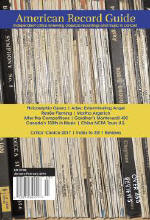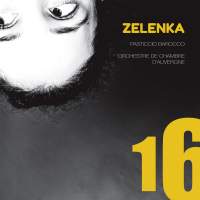|
Reviewer: Peter
Loewen
Jan Dismas Zelenka (1679-1745) composed his Hipocondrie and Symphony in
great haste to meet a deadline—probably for the coronation of Emperor
Charles VI as king of Bohemia in 1723. Incidentally, Zelenka’s Melodrama de
Sancto Wenceslao was performed on the same occasion. The entire program is
fascinating, with a wonderful blend of nearly inscrutable humor and
virtuosic genius. But this is often the case with Zelenka’s music.
Hipocondrie is certainly a strange name for a concerto, but, as Mathieu
Dupouy explains in his notes, hypochondria referred to a variety of
emotional states, including melancholy. This orchestral work has the form of
a French Overture, which alternates slow processional music in dotted
rhythms with a quick B section characterized by imitative counterpoint. The
unexpected harmonic shifts between major and minor seem to evoke the meaning
behind the programmatic title. The Symphony, on the other hand, is really a
concerto grosso for wind and string instruments consisting of a string of
dance-inspired movements. The Capriccio is particularly striking for its
exuberant rising scales in the oboes, echoed by the violins. The two Trio
Sonatas for two oboes, bassoon, and continuo (181:1+2) were composed between
1714 and 1723. They are delightful pieces that display the full range of
virtuosic skills the oboists in Dresden must have had. David Walter and
Helen Gueuret’s playing is crisp and inventive.
Fermer la fenêtre/Close window
|




